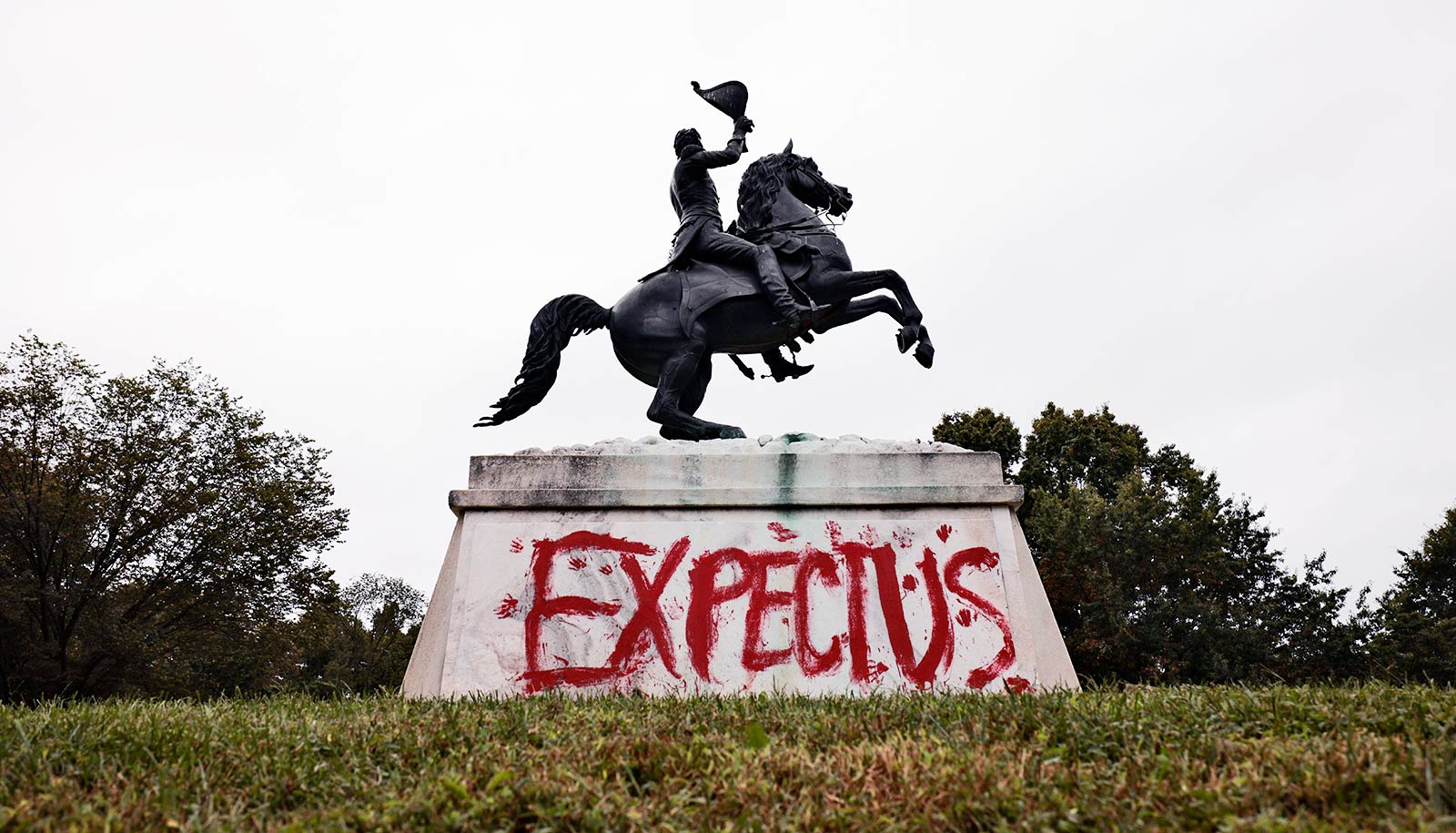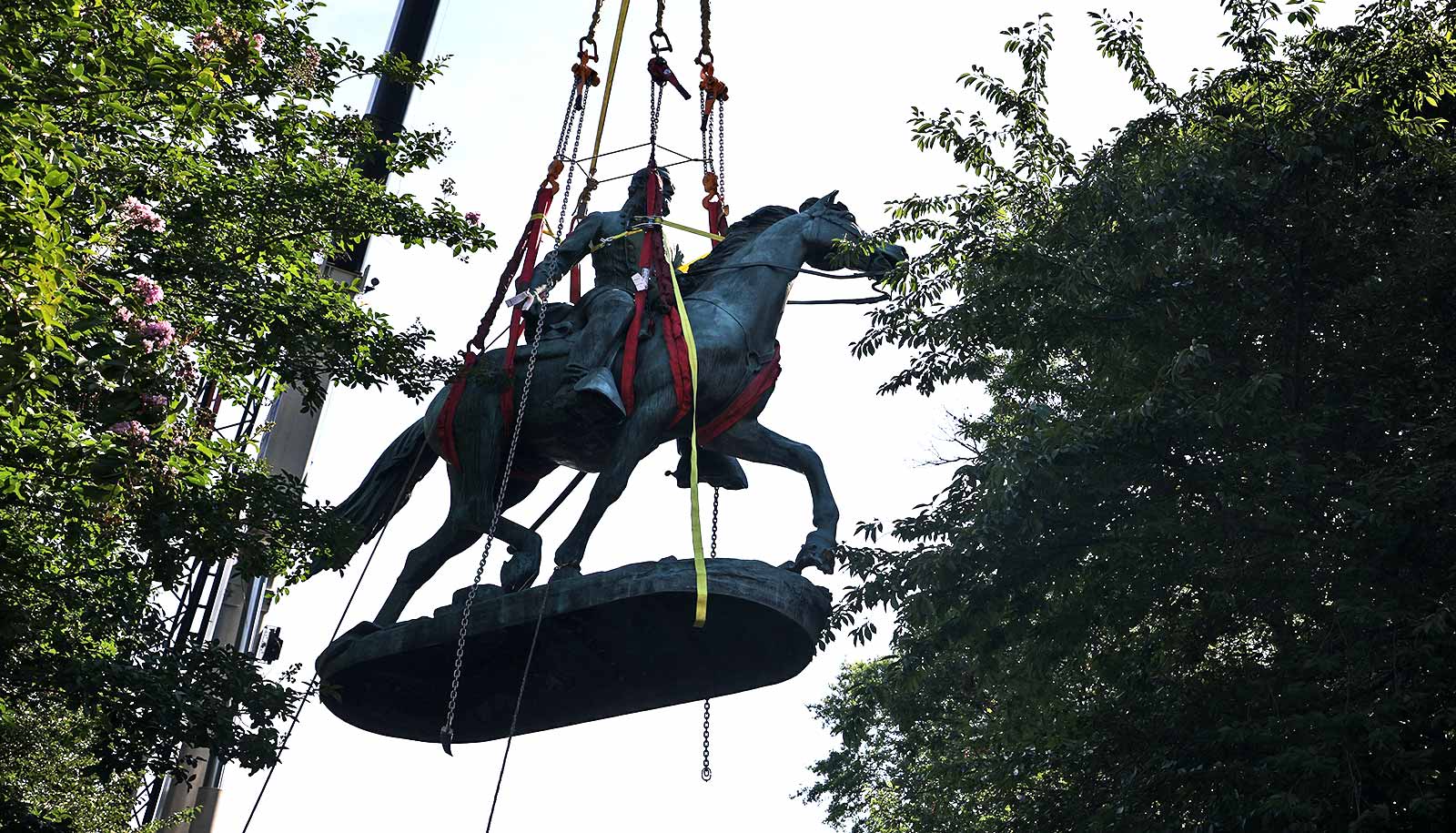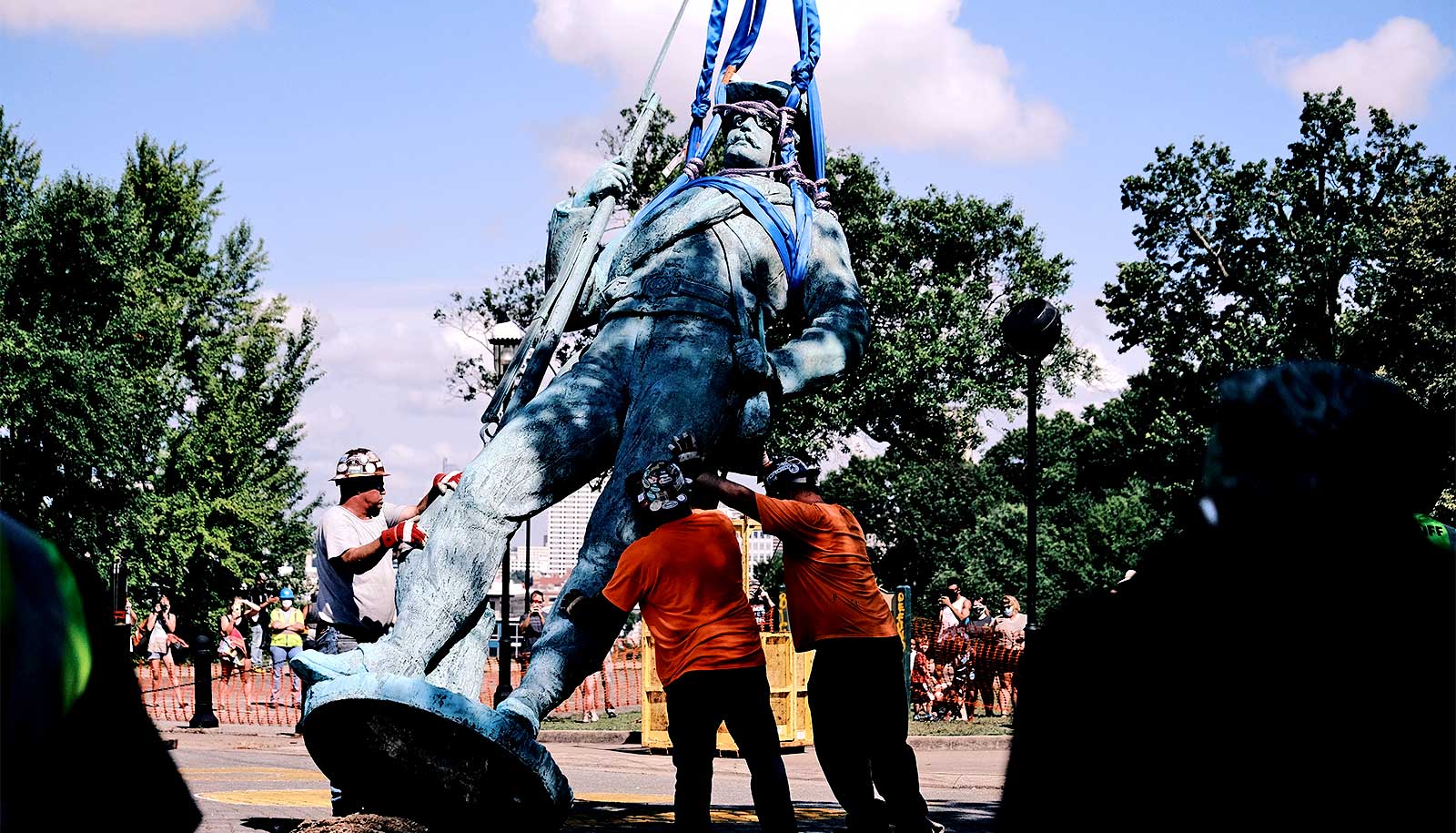A look at 48,000 conventional monuments in the United States reveals trends in who or what gets memorialized with a statue and who or what does not.
In October 2021, a statue of George Floyd—displayed among figures of John Lewis, the late civil rights activist and US Congressman from Georgia, and Breonna Taylor, a Black woman killed by Louisville police officers following forced entry into her home—was vandalized in New York’s Union Square.
“The audit’s dataset has found that while 22 monuments feature mermaids, only two represent US congresswomen…”
And that wasn’t the first time: In June, the same statue of Floyd had been defaced with a white supremacist logo while on view on Brooklyn’s Flatbush Avenue. The sculpture’s story—from its creation to the repeated damage it suffered—seems representative of tensions around public art that have arisen following Floyd’s death, amid a renewed effort to remove monuments celebrating figures associated with white supremacy and replace them with new works highlighting marginalized voices.
To gain a better understanding of the national landscape in this reckoning over monuments and narratives, Monument Lab, a Philadelphia-based nonprofit art and history studio, conducted a year-long audit of records documenting historic properties in every US state and territory, in partnership with the Andrew W. Mellon Foundation.
Researchers from the Monument Lab searched approximately a half million data records to generate a study set of about 48,000 conventional monuments, noting in their report, The National Monument Audit, that “there is no single agreed upon definition of a monument in American culture,” nor is there a “central system for tracking, maintaining, or understanding them.” For the purposes of this project, the researchers defined a monument as “a statement of power and presence in public.”
Among other key findings, the report reveals that the majority of monuments depict white male figures, and that they tend to highlight themes of war and conquest.
Here, NYU Gallatin assistant professor/faculty fellow Patricia Eunji Kim, associate director of public engagement at Monument Lab and one of the report’s coauthors and coeditors, talks about the stories current US monuments tell, and how public commemorations may change in the future:
How did the report’s findings compare to your expectations when the audit began? Did anything surprise you?
Although the report’s findings aligned with my own anecdotal experiences of public and civic spaces in the US, they were nonetheless startling. For example, through a Top 50 list, our research tracked historical individuals with the most recorded monuments in our study set. This kind of list is incredibly illuminating in its illustration of the figures that are repeatedly represented (and made absent) in cities and towns across the US over time.
Eighty eight percent of that list is occupied by people we would refer to as white men today. Fifty percent enslaved humans; and 76% owned land. Only 10% of the figures were Black or Indigenous, and there are no US-born Latinx, Asian, Pacific Islander, or self-identified LGBTQ+ people in the list.
The audit’s dataset has found that while 22 monuments feature mermaids, only two represent US congresswomen, drawing out similarly important questions around femininity. Such findings align with my teaching at NYU—in my seminar “Women and Public Art,” students learn about how and why feminized bodies, both in antiquity and the present, are presented in public spaces.
These bodies most often appear as personifications of concepts such as liberty and victory; places; mythologized figures, such as nereids and mermaids; and as dutiful mothers and wives. What does that suggest about cultural and political expectations for femininity?
You found that war and conquest are the themes most frequently commemorated in US monuments. What does that emphasis on violence tell us about our history?
The subject of war and violence abounds across the monument landscape, outnumbering any memorials to love, care, and peace within our study set. Such memorials and monuments gesture toward the significant loss of human and nonhuman life throughout the US and its territories as well as around the world.
Our study finds that the monument landscape may obscure different communities’ experiences of violence. For example, our records include 100 monuments to massacres: 53 memorialize the killing of white settlers or soldiers by Indigenous tribes, with less than 10 commemorating massacres of Native populations by white settlers. Such disparities and themes are reflected in our findings regarding the top 50 represented individuals as well.
In our Top 50 list, the most frequent appearances were of US presidents, and 11 monuments depict military general and naval admiral figures, with five of these figures having occupied both positions. Furthermore, 32 of the Top 50 participated in war in some capacity, with four of them having fought for the Confederacy during the Civil War.
One of the report’s calls to action is for the country to engage with dishonest narratives and acknowledge a more complete and accurate historical picture. What needs to happen to make sure we meet that challenge?
Artists and activists are leading the way forward in the kinds of changes we need. I am energized by the work of The New York City LGBT Historic Sites Project, new media projects like Monument to the Autonomous Republic of Artsakh—an augmented reality monument in Glendale, California, a site with one of the largest diasporic Armenian communities—and the interventions into public art on university campuses by artist Young Joon Kwak.
Students at the Gallatin School also deeply inspire me. Recently, I attended the Urban Democracy Lab’s Global Fellowship in Urban Practice symposium, where I learned about the incredible publicly engaged, arts-oriented storytelling work that student fellows do in collaboration with local communities. Junior Ama Sarpomaa’s work with African Communities Together, especially on the Forward Ever Podcast, is an excellent example of the kinds of transformative memory work that does not take the form of a conventional monument, and instead illuminates historical memories and personal experiences that are underrepresented in our study set.
Monuments must change, and the National Monument Audit—including the report, the search interface, educators guide, and series of essays highlighting community-driven memory work—is just one tool that hopefully energizes people to reimagine what an equitable and inclusive monument landscape might look like.
Source: NYU



